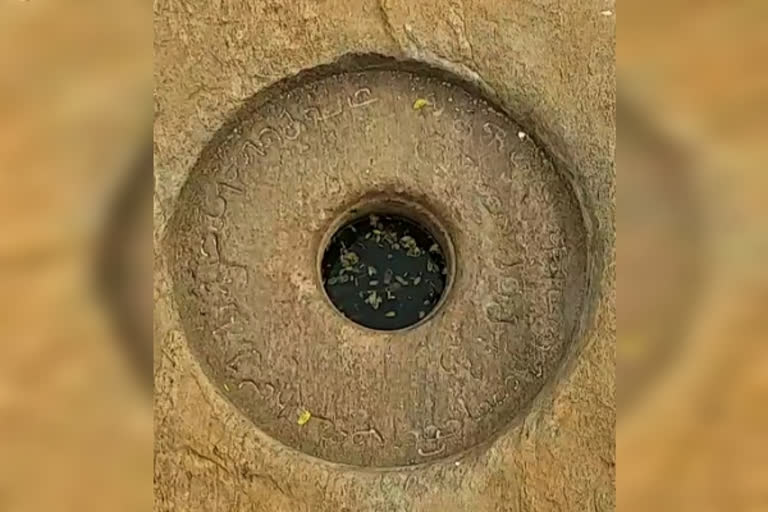Andipatti (Tamil Nadu): A team of archaeologists led by Dr. Gandhirajan have found and documented a chekku in a rock near Andipatti in Theni. The pit of the 15 feet long, 3 feet high and 7 feet wide chekku has an outer diameter of 25 inches and an inner diameter of 10 inches.
An inscription was found in the chekku. Vaigai archaeologist Pavel Bharathi says that according to Dr. Rajavelu, an inscription analyst, this inscription could belong to the 9th century Pandya period.
Commenting on this, he said, “In olden days, it was a usual practice to make chekkus in the rocks near water bodies so that travellers, monks, merchants and artists who travel to different places could make use of it to grind ingredients needed to cook food whenever they have to stay the night during the travel.”
“Accordingly, a group of people called Sevadi existed to cook and serve food for those travelling from Madurai to places of worship like Sadhuragiri Mahalingam temple, Maavootru Velappar temple, Periyakulam Balasubramaniar temple and Chinnamanur Sivagaamiamman temple. This chekku should have been made by them. Sevadi refers to servants of God or service to God,” he added.
He also said that in general, such chekkus would be donated to places of worship by the King or the people with the details of the donor being mentioned in it.
“The people who made this chekku could be from Thenmutta Nadu. But since it was found in Andipatti, few claim that Andipatti could be Thenmutta Nadu. But, Thenmutta Nadu includes regions located to the East of Andipatti like Mallapura, Sulapuram, Melathirumaanickam and the areas between Aezhumalai and Perungamanallur. Andipatti belonged to Alanaadu.
Also, the inscriptions here read as ‘Kannimangalaththu Kudiyaan Sevadi’. According to the Ekanathar Kottam inscription found at Kinnimangalam recently, a religious institution also functioned as a school and monastery there for two thousand years. If the inscription read as ‘Kinnimangalam’ instead of ‘Kannimangalam’, it would be considered that this chekku was made by the travellers, monks or merchants who frequented the place,” he added.
A lot of artefacts, memorials and inscriptions are being found in various parts of Tamil Nadu in recent times. These are relics of our ancestors that has to be preserved. Archaeologists request that this historical chekku, as it is in an open space, should be safeguarded.
Read Tamil Nadu Governor gives assent to 7.5% NEET quota Bill
